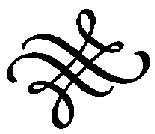
GLOSSARY
Abhidharmakosha (Treasury of Knowledge) by Vasubandhu. English translation (from a French translation) by Leo M. Pruden, Abhidharmakoshabhashyam, Berkeley, California, Asian Humanities Press, 1991.
Abhidharmasamuchchaya – see Compendium of Knowledge
Arhat (Tib. dgra bcom pa) – to become an Arhat is the final goal of the Shravakayana. It is a form of nirvana, beyond rebirth, but falls short of buddhahood. The Tibetan word literally means ‘one who has subdued the enemies’, i.e. negative emotions.
Aryadeva – a disciple of Nagarjuna and author of many important commentaries.
Asanga – great Indian master, half-brother of Vasubandhu, who composed important Mahayana works inspired by Maitreya. He is especially known as a proponent of the Chittamatra school. Circa 4th century.
Bhavaviveka – also known as Bhavya, the key figure in the development of SvatantrikaMadhyamaka.
Bodhicharyavatara – see Guide to the Bodhisattva’s Way of Life.
Bodhisattva – a being who has decided to bring all beings to enlightenment and who is practising the Bodhisattva path of the Mahayana.
Buddhapalita – circa 4th century Indian master, founder of Prasangika-Madhyamaka.
Chandrakirti – circa 3-4th century master, the greatest figure in the Prasangika-Madhyamaka school.
Chatuhshatakashastrakarika – see Four Hundred Verses on the Middle Way
Clear Words (abbreviated Skt. title: Prasannapada; full title: Mulamadhyamakavrttiprasannapada) – a commentary by Chandrakirti on Nagarjuna’s Mulamadhyamikakarika. English translation of selected chapters in M. Sprung, ‘Lucid Exposition of the Middle Way’.
Commentary on the Compendium of Valid Cognition (Pramanavarttikakarika) by Dharmakirti. No English translation.
Compendium of Knowledge (Abhidharmasamuchchaya) by Asanga. French translation by Walpola Rahula, Le Compendium de la SuperDoctrine (Philosophie d’Asanga), Paris, Ecole Française d’Extrême-Orient, 1971.
Dharmakirti – famous Buddhist master of the 7th century.
Emptiness (Skt. shunyata) – the absence of true existence in all phenomena.
Enlightenment (Skt. bodhi) – purification of all obscurations and realization of all qualities.
Four Hundred Verses on the Middle Way (Chatuhshatakashastrakarika) by Aryadeva. English translations by K. Lang, Aryadeva’s Chatuhshataka: On the Bodhisattva’s Cultivation of Merit and Knowledge, Indiske Studier, Vol. VII, Copenhagen, Akademish Forlag, 1986; and Geshe Sonam Rinchen and Ruth Sonam, Yogic Deeds of Bodhisattvas: Gyelstap on Aryadeva’s Four Hundred, Ithaca, Snow Lion, 1994.
Fundamentals of the Middle Way (Mulamadhyamikakarika) – a seminal text by Nagarjuna. English translation by F. Streng, Emptiness: A Study in Religious Meaning, Nashville and New York, Abingdon Press, 1967. See also K. Inada, Nagarjuna: A Translation of his Mulamadhyamikakarika, Tokyo, Hokuseido Press, 1970.
Guide to the Bodhisattva’s Way of Life (Bodhicharyavatara) by Shantideva. English translations include A Guide to the Bodhisattva’s Way of Life by Stephen Batchelor, Dharamsala, Library of Tibetan Works and Archives, 1979; and The Way of the Bodhisattra, translated by the Padmakara Translation Group, Shambhala, Boston, 1997.
Liberation (skt. moksha) – freedom from samsara, either as an arhat or as a buddha. Madhyamaka – literally ‘the middle way’. The highest of the four main Buddhist schools of philosophy. First expounded by Nagarjuna and considered to be the basis of Vajrayana. The Middle Way means not holding to any extreme views, especially those of eternalism and nihilism.
Mahayana – literally ‘the Great Vehicle’, the vehicle of bodhisattvas. It is great because it aims at full buddhahood for the sake of all beings.
Maitreya – the Buddha to come, the fifth in this present cosmic age. Many Mahayana teachings were inspired by Maitreya.
Mandala – the universe with the palace of a deity in the centre, as described in the Tantric practice of visualization.
Mantra – manifestation of supreme enlightenment in the form of sound. Syllables used in Tantric visualization practices to invoke the wisdom deities.
Mulamadhyamikakarika – see Fundamentals of the Middle Way
Nagarjuna – Indian master of 1st-2nd century CE who expounded the teachings of Madhyamaka, and composed numerous philosophical treatises.
Path of accumulation – the first of the five paths according to Mahayana. On this path one accumulates the causes that will make it possible to proceed towards enlightenment.
Path of connection – the second of the five paths according to Mahayana. On this path one connects oneself to, or prepares oneself for, seeing the two kinds of absence of self.
Path of seeing – the third of the five paths according to Mahayana. It is called this because one really sees the two kinds of absence of self, that of the individual and that of phenomena.
Pramanavarttikakarika – see Commentary on the Compendium of Valid Cognition
Prasannapada – see Clear Words
Samsara – the cycle of unenlightened existence in which one is endlessly propelled by negative emotions and karma from one state of rebirth to another. The root of samsara is ignorance.
Shamatha – ‘calm abiding’. The meditative practice of calming the mind in order to rest free from the disturbance of thought.
Shantideva – great Indian poet and master of the 7th century C.E.
Shravaka – follower of the root vehicle of Buddhism (Shravakayana) whose goal is to attain liberation from the suffering of samsara as an arhat. Unlike bodhisattvas, shravakas do not aspire to attain enlightenment for the sake of all beings.
Shravakayana – the vehicle of the hearers or listeners, based on the teachings of the Four Noble Truths.
Sutra – the teachings of both the Shravakayana and the Mahayana.
Uttaratantra – the full Sanskrit title is Mahayana-uttaratantrashastra (Supreme Continuum of the Mahayana). This text is ascribed to Maitreya. English translations from the Sanskrit by E. Obermiller, Sublime Science of the Great Vehicle to Salvation in Acta Orientalia 9 (1931), pp. 81-306; and J. Takasaki, A Study on the Ratnagotravibhaga, Rome, ISMEO, 1966. English translation from the Tibetan by Ken and Katia Holmes, The Changeless Nature, Dumfriesshire, Karma Drubgyud Darjay Ling, 1985.
Vajrayana – literally ‘the diamond vehicle’, also known as Tantrayana.
Vasubandhu – great Indian master, brother of Asanga, who composed classic philosophical works on the Sarvastivada, Sautrantika and Chittamatra doctrines.
Vipashyana – clear insight meditation.